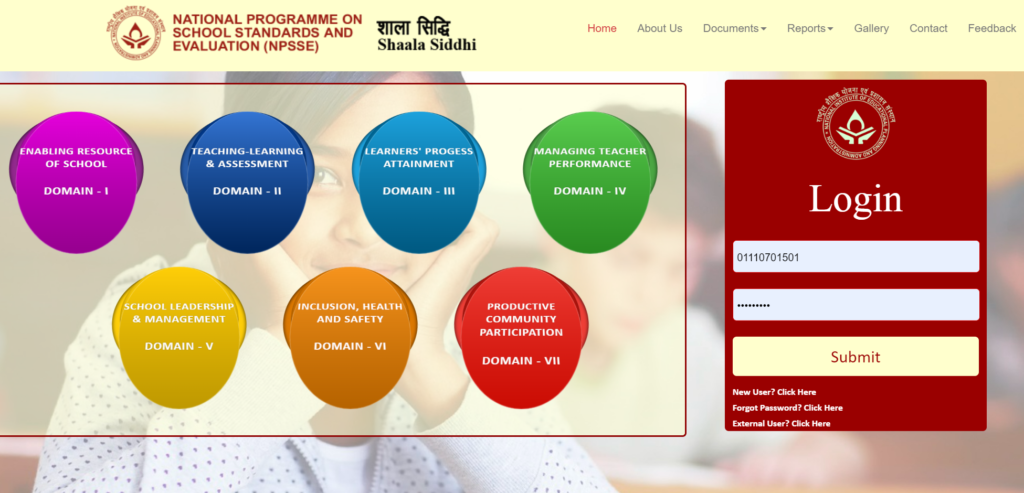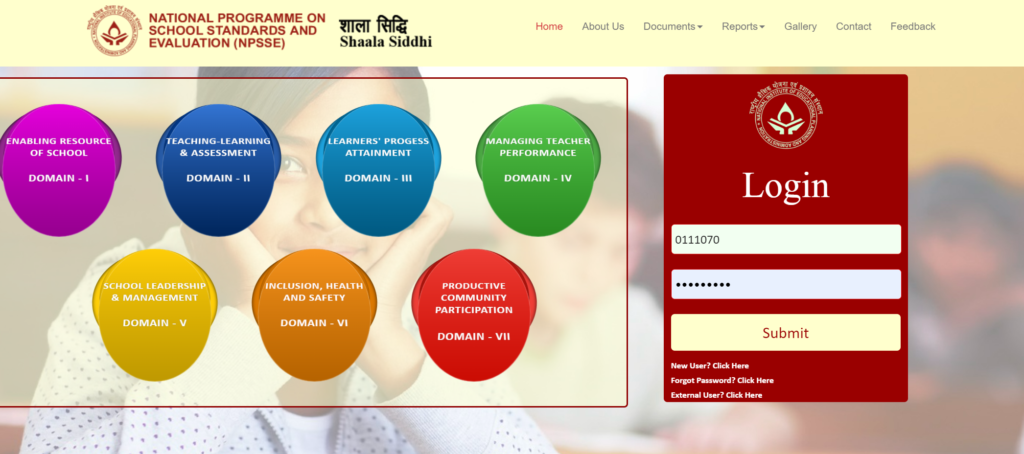Specific Learning Disabilities: Module 6 Answer Key
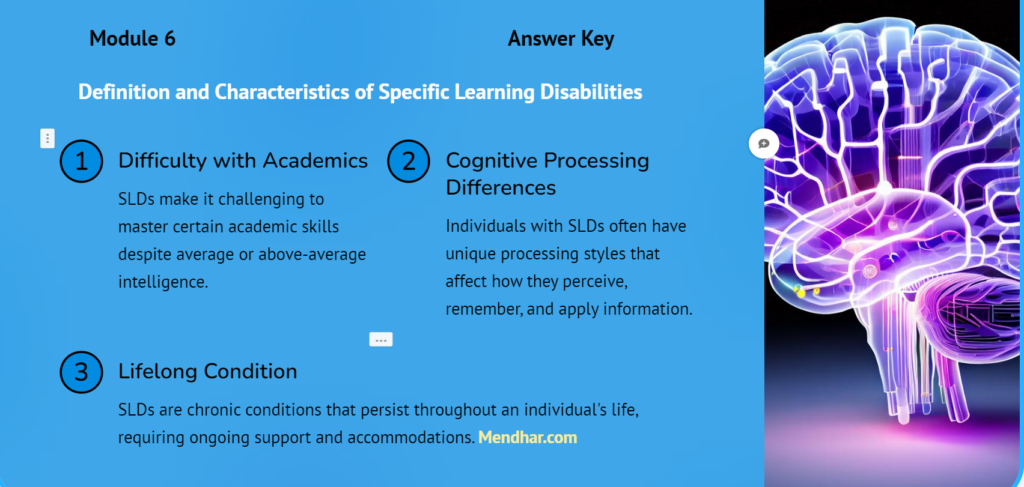
Introduction to Specific Learning Disabilities: Module 6
In the complex landscape of education and psychology, there exists a crucial challenge: understanding and effectively addressing specific learning disabilities (SLDs). These disabilities, encompassing conditions such as dyslexia, dyscalculia, and dysgraphia, among others, are often misunderstood and underestimated in their impact. Yet, they wield significant power over an individual’s capacity to absorb, process, and apply information in academic settings.
Imagine a student struggling to decipher letters on a page, grappling with mathematical concepts that seem impenetrable, or unable to express their thoughts coherently through writing. These are just a few scenarios that individuals with SLDs might face daily. The barriers they encounter are not due to lack of intelligence or effort but are rooted in the way their brains process information.
Enter Module 6 of SLD—an invaluable resource designed to delve into the intricacies of these disabilities. Within its pages lie insights, strategies, and methodologies crafted to support and empower those affected by SLDs. It serves as a beacon of understanding and guidance for educators, parents, and professionals navigating the complex terrain of learning disabilities.
Module 6 doesn’t just scratch the surface—it delves deep into the multifaceted nature of SLDs. It elucidates the neurological underpinnings of these conditions, elucidating how they manifest and evolve over time. By unraveling the complexities of SLDs, Module 6 equips its readers with a nuanced understanding, fostering empathy and informed decision-making in their interactions with individuals grappling with these challenges.
But understanding is merely the first step. Module 6 goes beyond mere comprehension—it offers actionable strategies and interventions aimed at mitigating the impact of SLDs on learning outcomes. From tailored instructional approaches to assistive technologies, from accommodations in testing environments to personalized learning plans, Module 6 leaves no stone unturned in its quest to support the diverse needs of individuals with SLDs.
Now, let’s turn our gaze towards the initiatives undertaken by the Government of India to confront this critical issue head-on. Recognizing the imperative of inclusive education, the government has spearheaded various efforts to ensure that individuals with SLDs are not left behind in the pursuit of knowledge and growth.
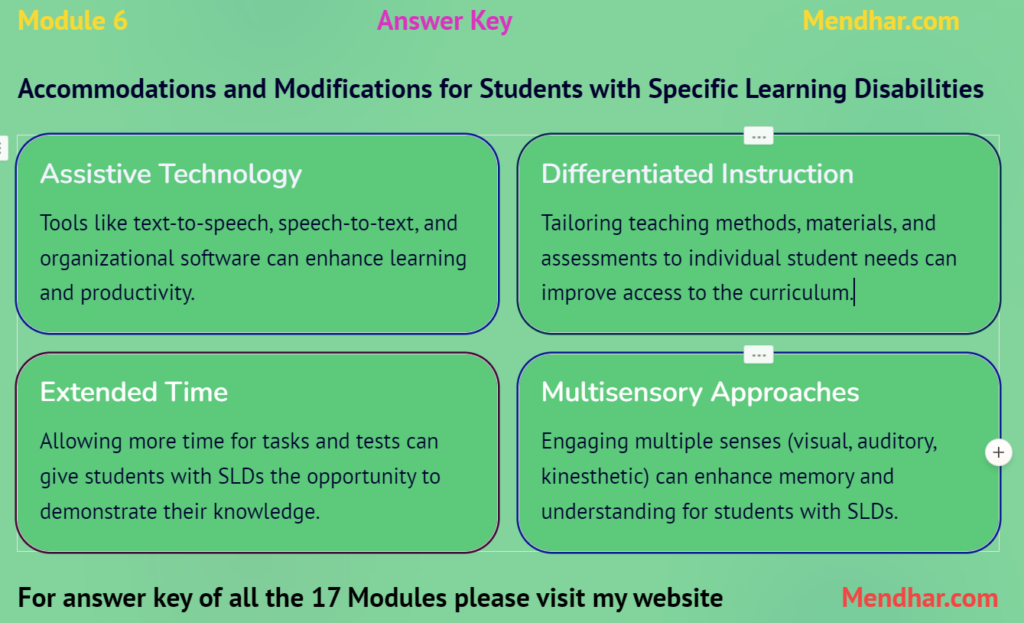
Specific Learning Disabilities: Module 6 Answer Key
1). Common symptoms associated with specific learning disabilities include:
– problems with auditory and visual perception or processing,
– the ability of written expression,
– mathematical challenges,
– All of the above✅
2). Children with SLD do not show any uneven pattern of development.
– TRUE
– FALSE✅
3). Individuals with learning disabilities have normal intelligence or are sometimes intellectually gifted.
– TRUE✅
– FALSE
4). Children diagnosed with Specific Learning Disability have poor understanding of jokes or expressions that are not explicit or do not convey literal meaning.
– TRUE✅
– FA LSE
5). Children diagnosed with specific learning disabilities do not have trouble learning the common rhymes and names of the alphabet in early childhood.
– TRUE
– FALSE✅
6). Few of the common types and symptoms of SLD covered under the RPWD Act of 2016, includes:
– Dyslexia
– Dyscalculia
– Dysgraphia
– All OF THE ABOVE✅
7). Dyslexia is a combination of two words `dis which in Greek means ‘badly and calculia in Latin means calculate’.
– True
– False✅
8). Symptom/s of children with dyscalculia is/are:
– Getting confused in differentiating ‘left’ and ‘right’
– Starting mathematical problems in the wrong order
– All of the above✅
9). Children with dyscalculia have good number sense.
– TRUE
– FALSE✅
10). Dyscalculia is a disorder characterized by problems related to mathematics.
– TRUE✅
– FALSE
11). Children with dysgraphia have:
– Tendency to avoid school work
– Ungrammatical and disorganized writing
– Poor spelling
– All of the above✅
12). Children with dysgraphia often complain that writing by hand is painful for them
– TRUE✅
– FALSE
13). Difficulty with spacing text is not challenging for students with dysgraphia.
– TRUE
– FALSE✅
14). The word ‘dysgraphia’ comes from the Greek words ‘dys’ which means ‘impaired’ and ‘graphia’ which means ‘writing by hand’.
– TRUE✅
– FALSE
15). Poor hand and eye coordination and difficulty with fine motor tasks can disturb students’ academic activities such as:
– Colouring within lines
– Putting puzzles together
– Cutting or pasting accurately
– All of the above✅
16). Children facing perceptual problems struggle to remember shapes, symbols or objects they have seen.
– TRUE✅
– FALSE
17). Perceptual disorders affect the ability to recognize stimuli received through:
– sight
– Hearing
– Touch
– All of the above✅
18). Dyspraxia is a specific disorder in the area of gross and fine motor skills development.
– TRUE✅
– FALSE
19). Understanding the characteristics or learning styles of a child can lead to a significant improvement in his/her:
– Academic performance
– Social awareness
– Overall self-esteem
– All of the above✅
20). Students with dysphasia may have limited ability to construct a story or describe events in a logical sequence.
– TRUE✅
– FALSE
21). Dysphasia is a communication disorder that makes it hard to use words.
– TRUE✅
– FALSE
22). Dysphasia is also referred to as developmental aphasia.
– TRUE
– FALSE✅
23). An individual having dyscalculia may get easily frustrated while doing anything which includes a lot of mental calculations and manipulations.
– TRUE✅
– FALSE
24). Dysphasia is also referred to as developmental aphasia, which is a communication disorder that makes it hard to use words.
– TRUE
– FALSE✅
25). Children with dysphasia may have difficulty in understanding the meaning expressed by word order.
– TRUE✅
– FALSE
26). Symptom/s of children with dyscalculia is/are:
– Difficulty in decoding the mathematical language
– Getting confused in differentiating ‘left’ and ‘right’
– Starting mathematical problems in the wrong order
– All of the above✅
I hope this helps! Let me know if you need anything else.
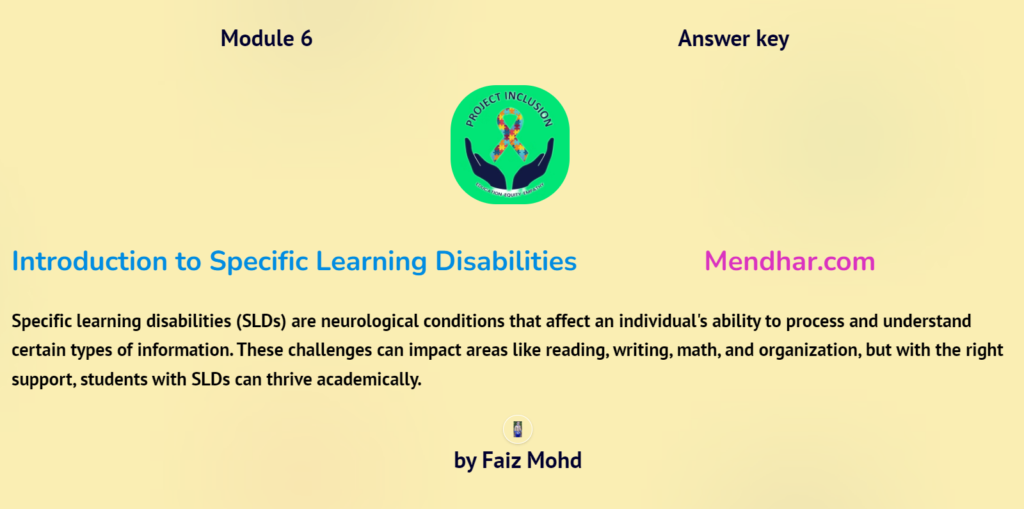
The National Policy on Education (NPE) stands as a testament to the government’s commitment to inclusive education. By advocating for the integration of students with disabilities into mainstream educational settings, the NPE lays the foundation for a more equitable and accessible education system.
Moreover, initiatives such as the Sarva Shiksha Abhiyan (SSA) and the Rashtriya Madhyamik Shiksha Abhiyan (RMSA) seek to bolster the infrastructure and resources available for students with SLDs. Through the provision of special educators, resource rooms, and assistive technologies, these programs aim to level the playing field, ensuring that every child has the opportunity to thrive academically.
Additionally, the Inclusive Education for Disabled at Secondary Stage (IEDSS) scheme focuses specifically on providing support to students with disabilities at the secondary level. By offering financial assistance for hiring special educators and establishing resource centers, IEDSS endeavors to bridge the gap between aspiration and attainment for students with SLDs.
In essence, Module 6 of SLD and the initiatives of the Government of India converge on a common goal: to foster an inclusive and supportive educational environment where individuals with SLDs can flourish. Through understanding, empathy, and concerted action, we can pave the way towards a brighter future—one where every individual, regardless of their learning differences, is empowered to realize their full potential.
Conclusion:
In conclusion, Specific Learning Disabilities: Module 6 serves as a comprehensive guide to understanding and addressing the needs of individuals with SLDs. Through initiatives like the National Policy on Education and programs such as SSA, RMSA, and IEDSS, the Government of India is working to ensure that every child has access to quality education, regardless of their learning abilities. By embracing inclusive practices and providing the necessary support and accommodations, we can create a more inclusive society where every individual has the opportunity to reach their full potential.


